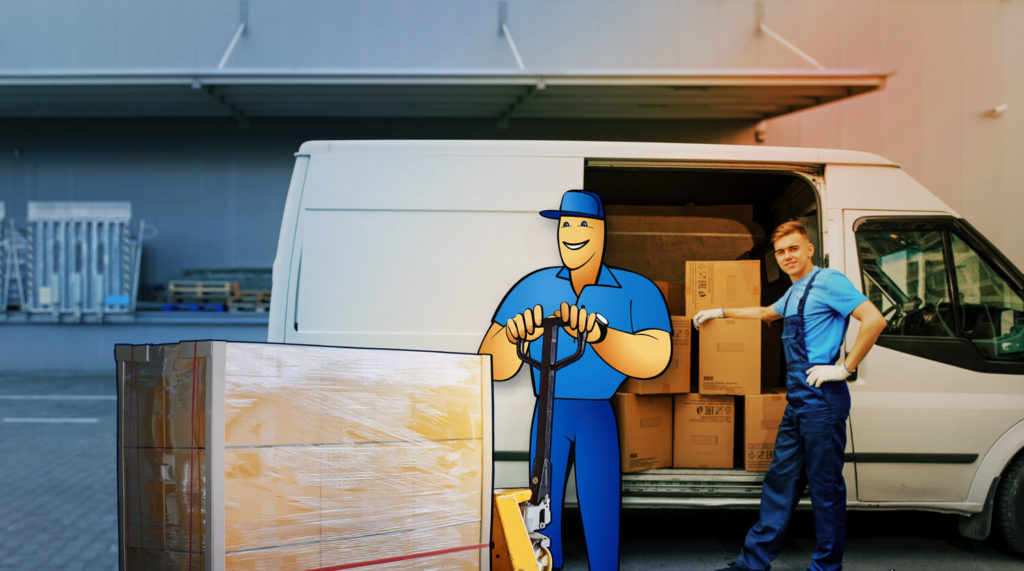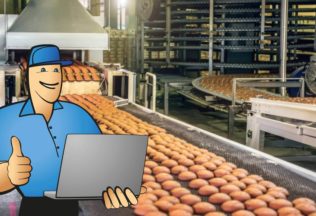Distribution Management Basics for SMEs
Distribution management is an integral part of any well-functioning business that sells physical products. Although the actual shipping of goods takes a central role in the process, distribution management includes many other processes that support timely and cost-effective deliveries.

You can also listen to this article:
What is Distribution Management?
Distribution management is the systemic organization and tracking of the distribution of the goods produced and/or sold in a company. It encompasses and overlaps with many different processes, including sales, order management and fulfillment, packaging, warehousing, and logistics – as such, it is an integral part of supply chain management.
Every company that sells physical products has to manage the distribution side of its business. And in today’s era of constant supply chain disruptions, properly handling your distribution management is essential if you want to ensure that the right products get to the right customers on time. Moreover, getting a tighter grip over your distribution can help you reduce costs and find new markets for your products.
Aspects of Distribution Management
As already mentioned, distribution management covers and overlaps with many processes required to organize the timely delivery of goods to the customer. Some of these key components are:
- Storage and warehousing: the optimal number, location, and size of warehouses, storage conditions, materials handling equipment.
- Inventory management: what to stock, how much, and where in order to ensure minimal lead times and high customer satisfaction.
- Packaging and unitization: what is the unit load, how to package the goods, and which equipment to use.
- Transport: which mode of transport to use, who delivers and when, how much each vehicle should carry, and what routes to use.
- Information and control: setting up control procedures, forecasting in order to plan deliveries, what kind of systems and software is used.
Looking at distribution through these functions and not merely as a loading-hauling-unloading process gives managers the chance to look at their company as an integrated whole and to act systematically to improve the operation’s service levels as well as cost-efficiency.
Distribution vs. Logistics
The main difference between distribution and logistics is that while logistics covers the entire supply chain from raw materials supplier to manufacturer to customer (and sometimes in the opposite direction, as well), distribution is tasked only with finding customers and getting goods from the producer to the buyer. Simply put, distribution only deals with outgoing finished goods while logistics also covers incoming supplies, overlapping with materials management.
Distribution Channels
Traditionally, manufacturers have used intermediaries in order to get their consumer goods to retail stores, which then sell the products to consumers. Companies that sell business-to-business, such as industrial goods or chemical manufacturers, have generally been more varied in their distribution method, opting for both direct deliveries as well as using intermediaries (third-party distributors or the company’s own distribution centers), depending on the order volumes.
In the digital era, however, the traditional distribution channels have been challenged by the internet and the expansion of e-commerce. Today, there are several different distribution channels available for use by both manufacturers and distributors.
1. Manufacturer to Wholesaler to Retailer. In this case, the manufacturer first sells their products to wholesale companies that then resell the goods to retailers that then offer them to end consumers. Prime examples of this kind of a distribution channel are auto parts manufacturers, large appliance manufacturers, pharmaceutical manufacturers, agricultural producers, etc.
2. Manufacturer to Distribution Center to Retailer/Consumer. Multinational conglomerates such as Coca-Cola, Nike, etc. often build distribution centers to which manufacturers from various locations send their output. These distribution centers then deliver smaller quantities to either retailers or directly to consumers. In the example of distribution companies like Amazon, independent manufacturers send their goods to the distribution centers, from where the products are delivered to end consumers.
3. Manufacturer to Retailer. This very traditional model has mostly been used in local environments where manufacturers take their products straight to retailers situated in their area. An example of this would be local food manufacturers. Although this distribution channel has been heavily disrupted by offshoring, frequent supply chain disruptions have led to many manufacturers reshoring close to the end-consumers of their products, which has made this model more popular once again.
4. Direct-to-Consumer (D2C). The explosion of e-commerce has led to some manufacturers selling their goods straight to the end consumer through a web store. D2C is a viable option for companies that produce consumer goods and it can be used alongside any other distribution channel to prop up sales and increase the profit margin as no revenue is lost to intermediaries.
5. Business-to-Business (B2B). This distribution channel is used by manufacturers that produce raw materials, components, or equipment that is used by other companies to conduct their business. These include industrial machinery manufacturers, restaurant equipment manufacturers, business furniture manufacturers, etc.
Which distribution channel should I use?
The decision on which distribution channel to use should be made by carefully weighing the costs and benefits of all of them because once a distribution channel has been established, it might be tricky to go back. It makes sense to take a look at what your competitors are doing, but at the same time be open to exploiting promising channels that other companies in your field are not yet using. For example, if you strive to be a customer-centric company, it makes sense to establish a connection with your target audience through direct sales. If you produce fast-moving consumer goods such as food or beverages, you should definitely find partners in wholesale and/or retail.
After analyzing the cost/benefit of various channels, you can choose the option that would fit your budget and likely bring in the most revenue. And as your business expands, you can start looking for additional distribution channels to take your products to more customers. The key is to always consider the nature of your product, your target audience, and the company’s goals.
Distribution Management and software
Distribution management today relies heavily on digitization. Various stages of a product’s lifecycle are managed within software systems: MRP in the manufacturing stage, WMS for warehousing, e-commerce platforms and CRM for sales and order management, and shipping and fulfillment software for deliveries.
But even though software promises to make processes quicker and more efficient, having several types of distinct solutions might actually complicate matters. If the software chosen for each stage of the process do not communicate with one another, the same data needs to be entered into different systems separately, which apart from costing extra resources also creates an error-prone environment. And if these errors pile up, a company might find itself in a perfect storm of overproducing, understocking, wrong deliveries, or just bad customer service.
This risk can effectively be mitigated by choosing a software that could handle all aspects of the business from sales to delivery. Manufacturers should therefore opt for manufacturing resource planning software that supports the various functions needed to operate: CRM, procurement, production planning and scheduling, inventory management, finances, and order fulfillment.
Thanks to cloud-based systems, now even small manufacturers can find an affordable solution that would accompany all of their processes. While even the best manufacturing software for SMEs do not provide everything in their core software, many of them offer integrations with third-party apps that are specialized to provide support in key areas. These may include CRM systems, accounting, and fulfillment apps as well as e-commerce platforms. The manufacturing software acts as a central platform that communicates with other apps, relaying the necessary information and eliminating the risk of human error.
Key takeaways
- Distribution management is the systemic organization and tracking of the distribution of the goods produced and/or sold in a company.
- Apart from organizing and tracking deliveries, distribution management includes and overlaps with processes such as warehousing, inventory and order management, packaging, transport and logistics, and data management.
- The main difference between distribution and logistics is that distribution only deals with outgoing finished goods while logistics also handles incoming supplies.
- There are several different distribution channels available for use by both manufacturers and distributors. These include using intermediaries, selling directly to retailers, selling directly to consumers, or to other businesses.
- Today, distribution management is simplified and further integrated into other business processes through ERP/MRP software.
You may also like: Procurement Management – A Quick Guide for Small Manufacturers




